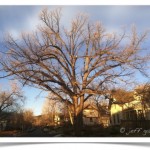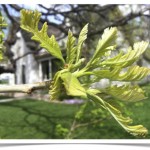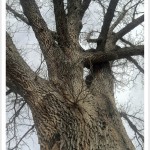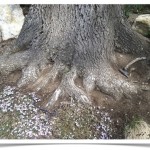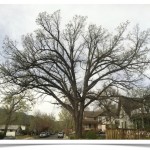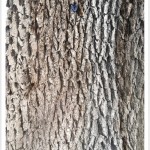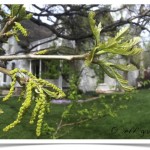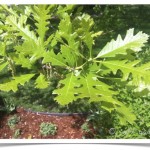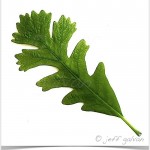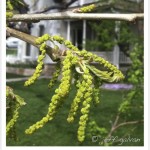Botanical name: Quercus macrocarpa
Family: Fagaceae (beech)
Group: White Oak
Click on images of Bur Oak to enlarge.
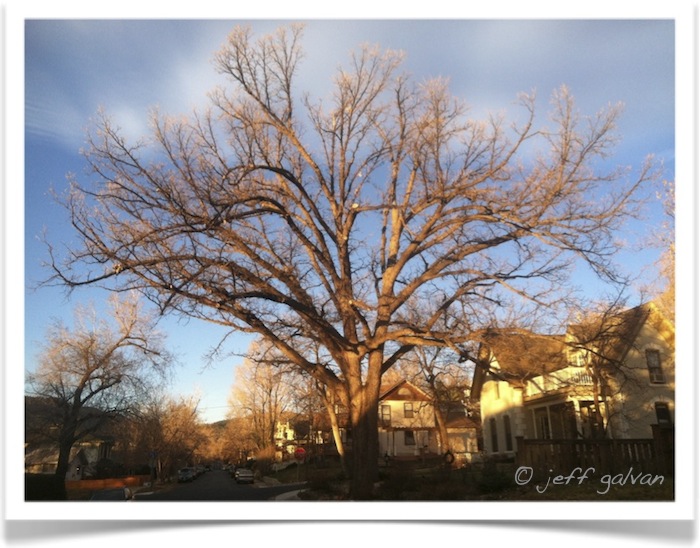
A.K.A. mossy-overcup oak, mossycup oak, white oak, blue oak and scrub oak.
- Native
- Deciduous
- The second part of the scientific name or specific epithet, macrocarpa means large seed or fruit and the bur oak produces the largest acorns (up to 2 inches in diameter) of all the oaks found in North America.
- Fully mature trees can grow massive 8 – 10′ diameter trunks with a huge open crown, that can be as wide as the tree is tall.
- Reaches heights of 70 – 100′ and occasionally more.
- They are slow growing trees, although, when they are young they can grow more than 12 inches a year in height and grow long tap roots very quickly.
- Lifespan is approximately 400 years.
- Simple leaves are broad and 6 – 10 inches in length with lobed margin.
- Bur oak is monoecious.
- Flowers – Catkins are 4 – 6 inches in length.
- Fruit – produces acorns every 2-3 years.
- It is drought and fire resistant.
- Bur oaks fair well in urban environments.
- Some damaging insects include oak webworm, oak skeletonizer, oakleaf caterpillar, oak lacebug, redhumped oakworm and June beetles.
- Common problems include: susceptible to (fungi) Strumella canker, cotton root rot and Oak wilt – sometimes through rare root graphs with red oaks.
- Plant Hardiness Zones 3 – 8
- Oak, Bur
- Bur Oak Leaves (spring)
- Bur Oak
- Bur Oak (spring)
- Oak, Bur ~ Bark
- Bur Oak – Leaves and Catkins
- Bur Oak Leaves
- Oak, Bur ~ Leaf
- Oak, Bur ~ Catkin
Photographs of the oldest bur oak in Boulder, Colorado.


